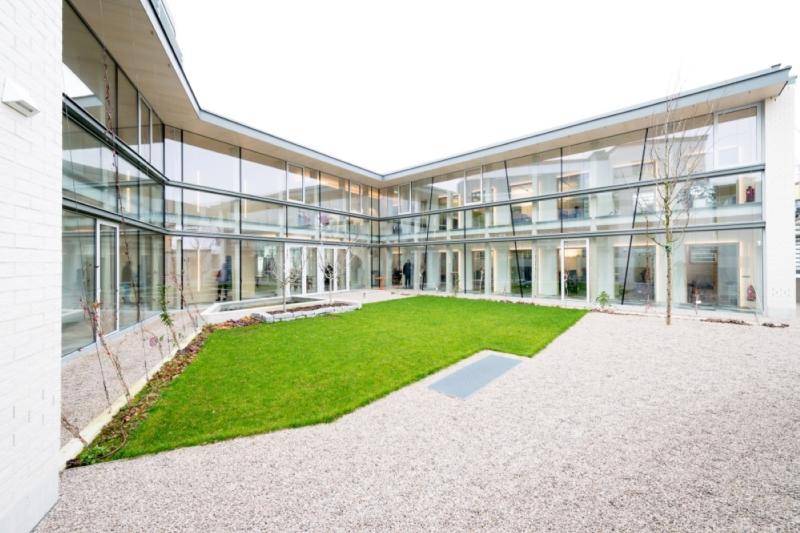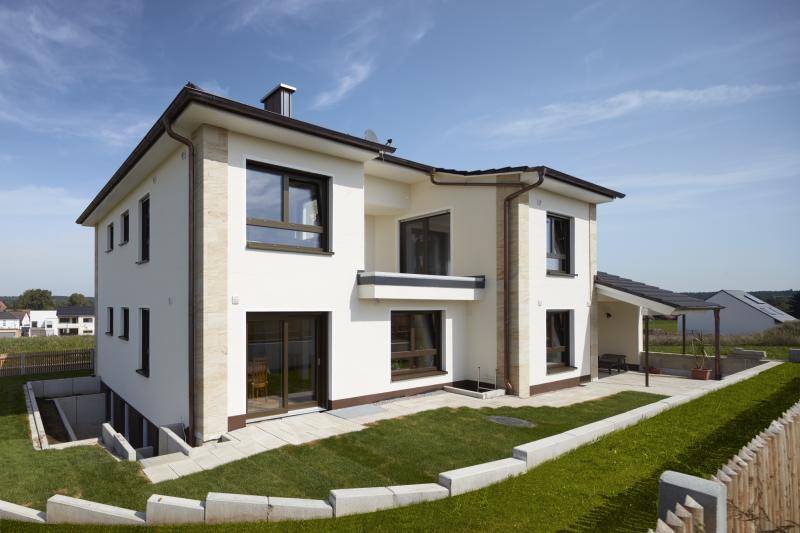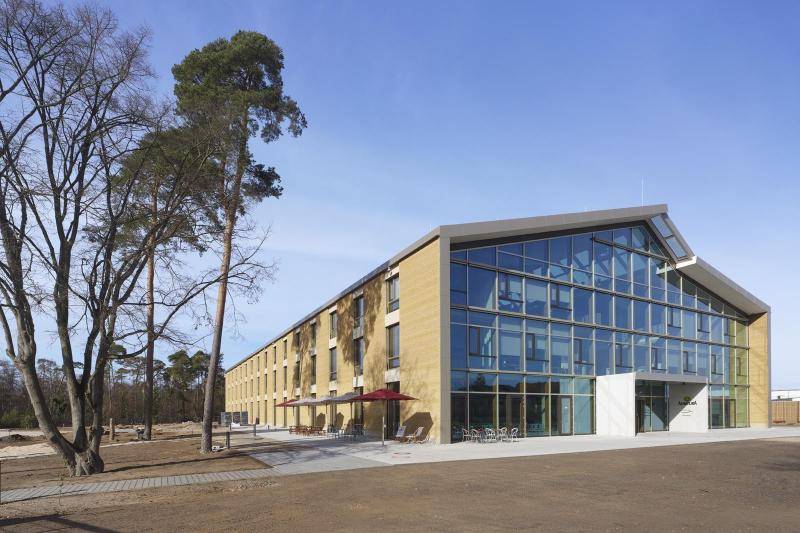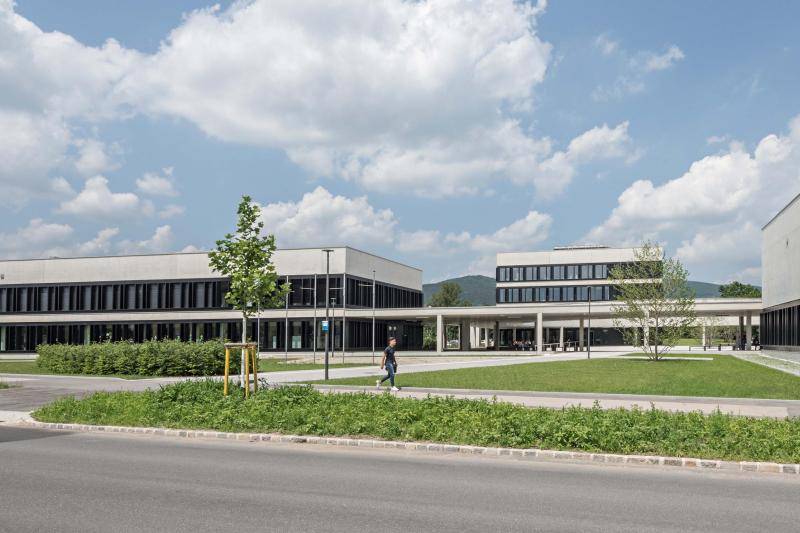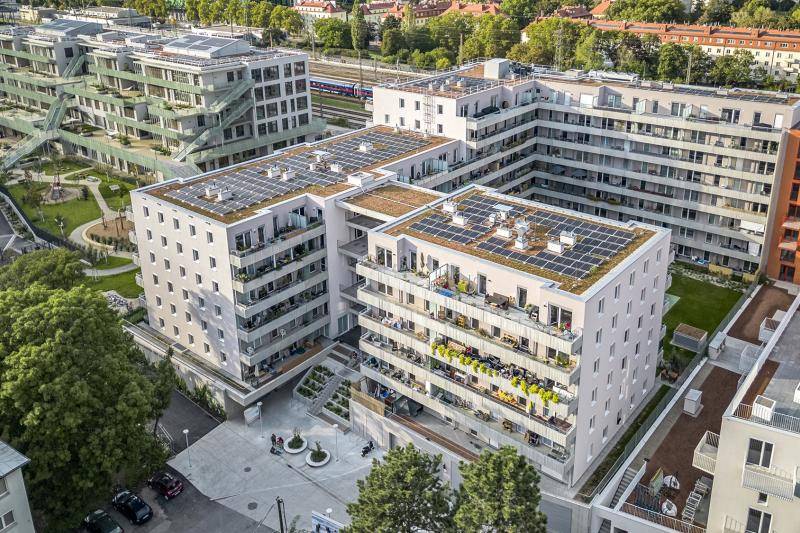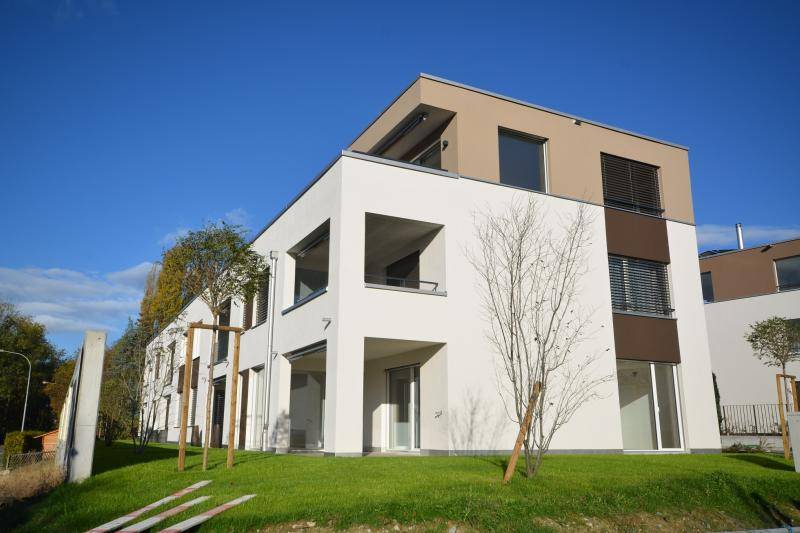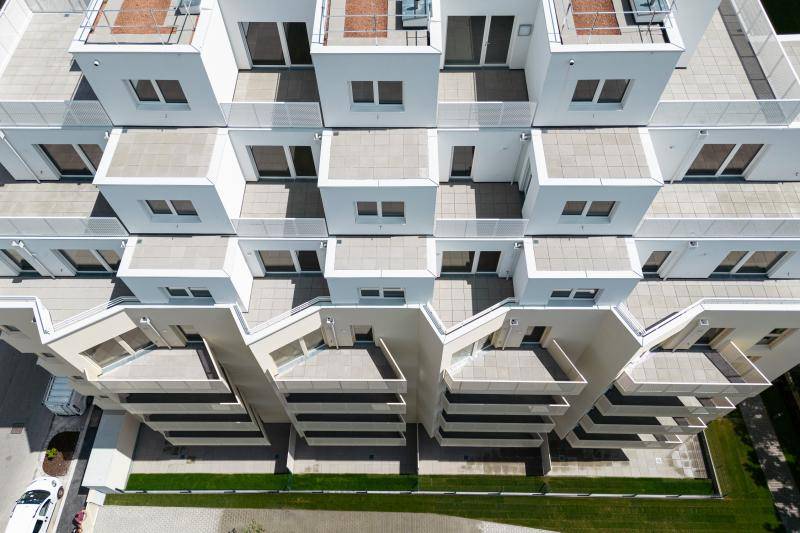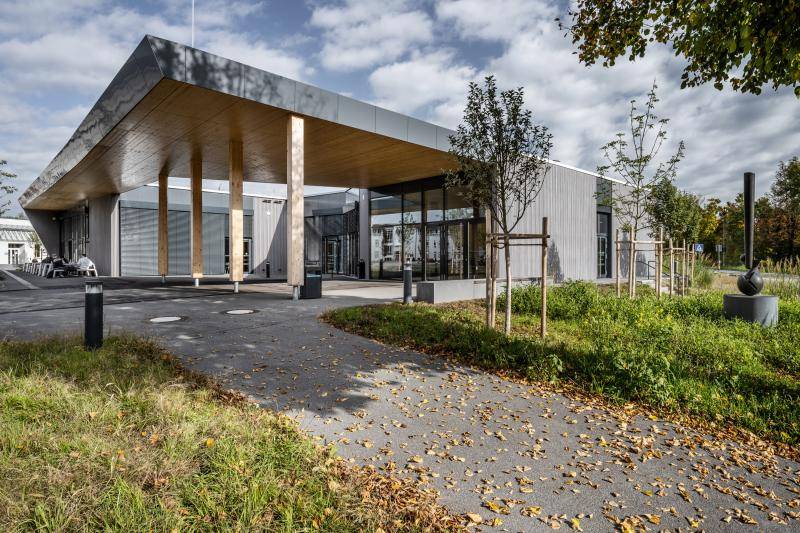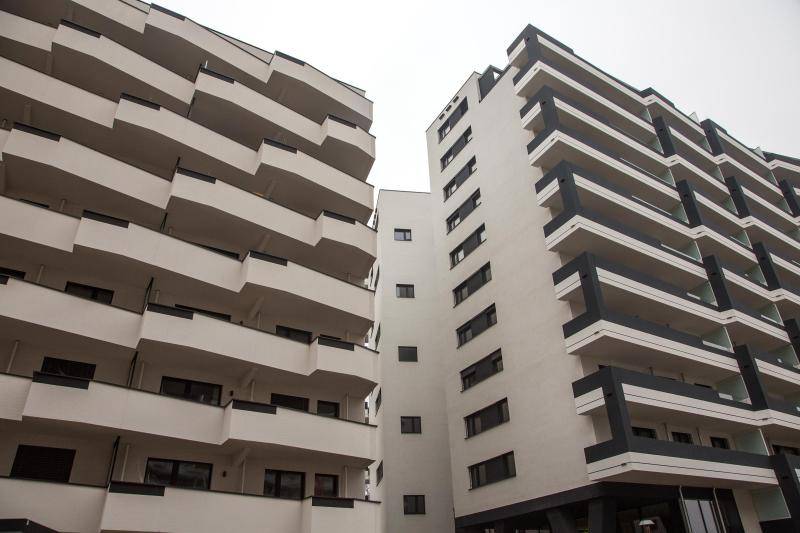ÖKK-Headquarter
The architecture of the new ÖKK headquarters points to its public significance as part of the new urban fabric of Landquart. It thus follows the urban planning tradition of the Italian urban palazzo type, which is merely a simple residential building and stands close to the urban fabric, but creates added value and publicity for the city. The publicly accessible and used first floor is of central importance here.
ÖKK Kranken- und Unfallversicherungen AG
2012
project management: Daniel Hoffmann, Clarissa Wacker
Civil engineer: Fanzun AG dipl. Architekten und Ingenieure
Building services:
12.864 m²
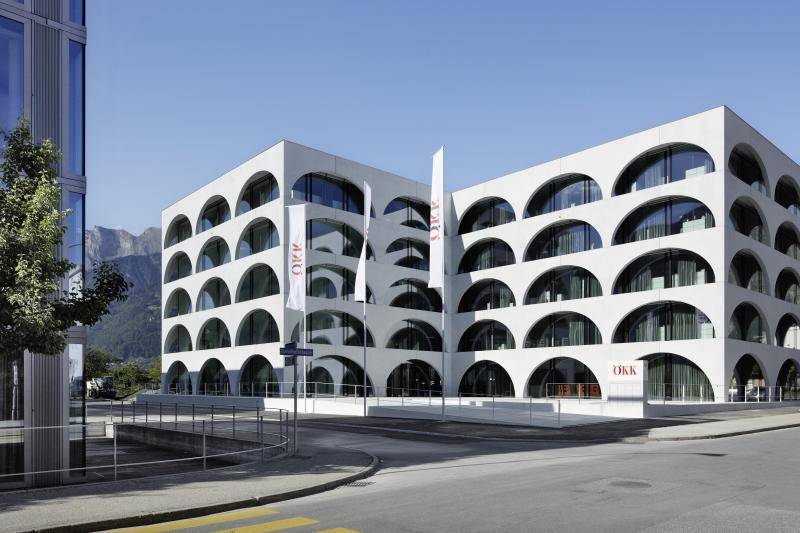
The publicly accessible and used first floor, its forecourt and the hall, which is available for both internal and public events, are of central importance to the ÖKK office building. The ÖKK building manifests this claim in its architectural expression: the motif of the arcade always appears in architectural and cultural history when it comes to creating open passages and halls such as market halls, churches, street arcades or cloisters. Public means first and foremost spatially open, accessible or open-plan. The ÖKK building is a solid construction with five stacked storey tables.
Inside, the floor areas are open, with glass offices (i.e. not visually closed). The glass partition walls of the offices can be adapted to future changes of use. The strategy of "noble shell construction" and the expressive power of solid construction are evident here: Natural stone floors and filigree concrete ribbed ceilings made of white, prefabricated exposed concrete elements lend the rooms durability. Normally, hollow ceilings and hollow floors are used in office construction, i.e. cladding and fit-out strategies that, conversely, emphasize the flexible, temporary or even non-binding. The prefabrication of the arched slabs and ribbed ceilings, which were used as "lost formwork", significantly reduced the construction time. In addition, the ribbed structure of the ceilings ensures good acoustic properties, as sound-absorbing material could be inserted between the ribs.
The building services follow the room concept: fresh air is drawn in through the floors and the central courtyard by means of simple, peripheral window ventilation using a ventilation unit on the roof, and the waste heat is extracted from the stale air using a heat exchanger. This is fed back into the building's heat cycle. Groundwater energy, which is obtained using a heat pump, serves as a source of heating and cooling. It is distributed through circulation circuits in the solid ceilings of the building. In this way, the mass of the solid construction can be used not only as a load-bearing and spatial structure, but also for the distribution, storage or absorption of heat (equivalent to room cooling in summer).
